What kind of idiot would go on a once in a lifetime trip, to a place they have never been, and take a camera they have never used?
Well, me I guess.
So this is the story of learning to use the Olympus Chrome Six. Let’s start with some context.
In late March, I spent 8 days between Helsinki Finland and Tallinn Estonia. This was my yearly photo trip. No wife, no kids, and no agenda other than wandering around a new (to me) place with a couple of cameras and 18 rolls of film.
In my bag I also had my trusty Nikon FE2 and for ultimate back up a well-used digital Sony A7s with a Nikon F mount adaptor. I swore not to use the Sony except in emergencies, like the night a Finnish metal band was playing in the small bar next to my hotel. That turned out to be an ISO 10,000 emergency. But other than that I left it in the hotel.
As for the Chrome Six, I really wanted to shoot some medium format and the options I had didn’t seem suited to either air travel or to carrying around on foot all day. I wanted something light and compact and a folding camera seemed like the best bet. After looking around, I settled on an Olympus Chrome Six. It appeared to be in excellent condition and when it arrived everything seemed to test out just fine. I just didn’t have time to run any film through it. Or actually you know, get used to operating it. What the heck, how hard could it be!?
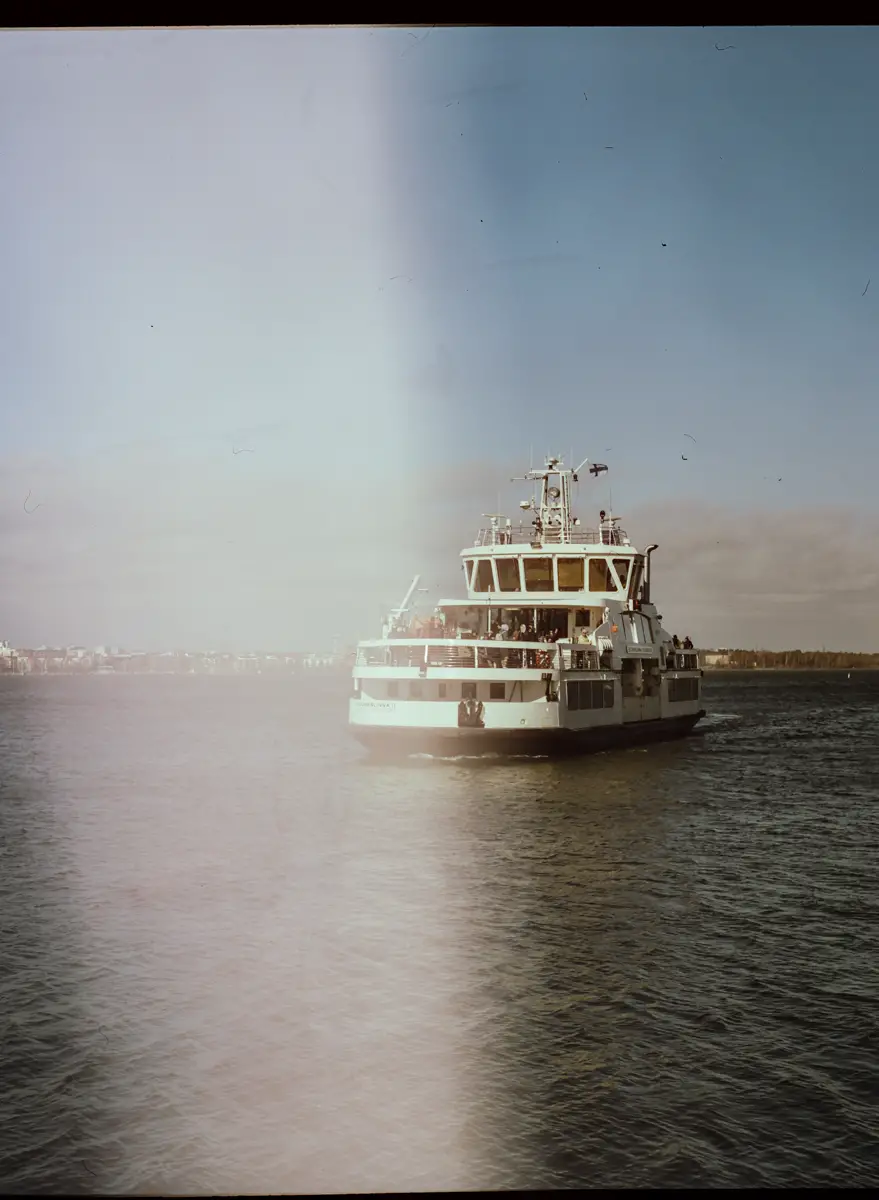
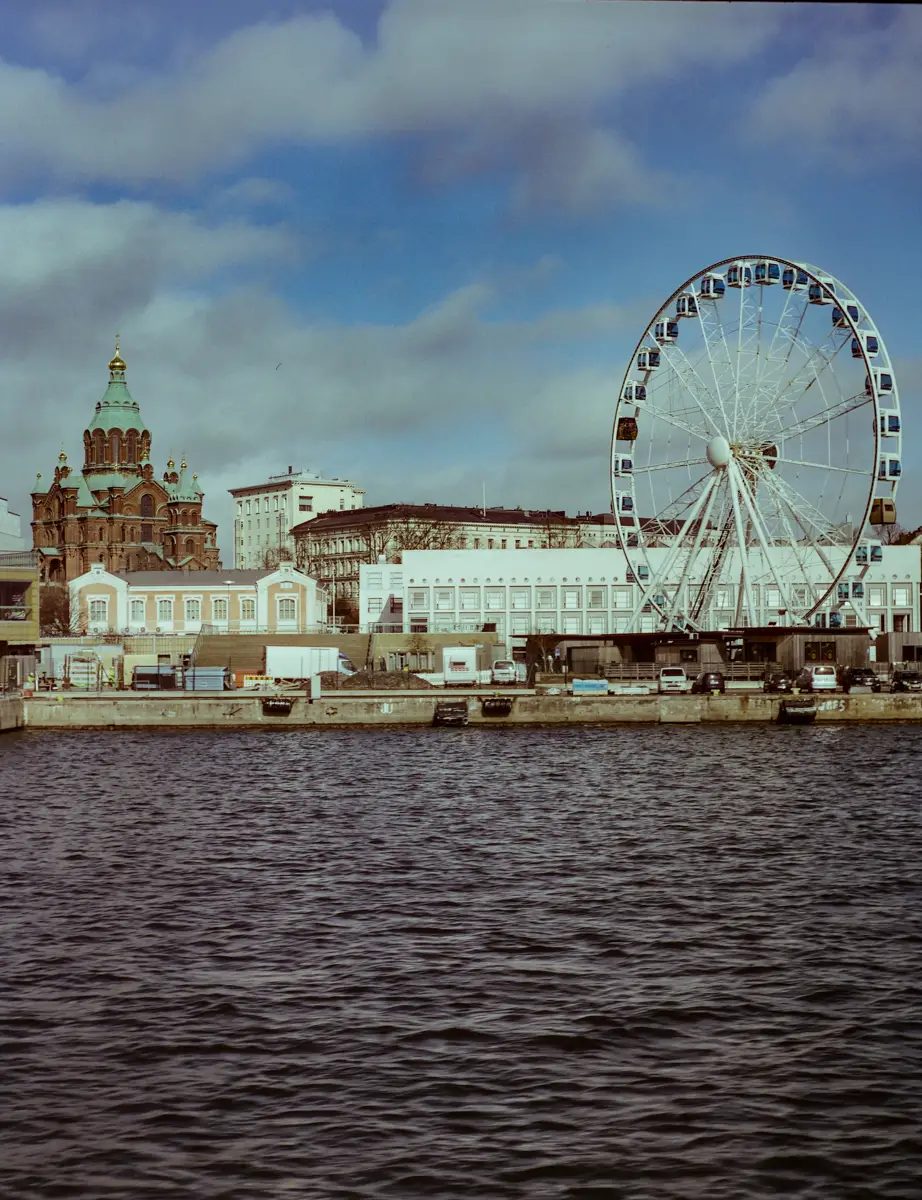
Day one, where I remember this is a multiple format camera:
One nice thing about the chrome six is it can shoot either 6×6 or 6×4.5 formats. This is accomplished using a small metal frame that snaps into the film chamber. It is kind of a flimsy little thing, so after figuring out how to remove it, I just stuck it back in the camera and forgot all about it. Forgot all about it until I was about 2 thirds of the way through the first roll and figured I had been framing everything for 6×6, but shooting everything at 6×4.5. I was also struggling with the “red window” film advance system. Different film types use different symbols to indicate you are approaching the next number, and I really was struggling to figure out what I was looking for. In response I did the logical thing; put on my reading glasses and found a nice beam of sunshine to illuminate the window. The wrong window of course, since in my mind I was still thinking 6×6. In somewhat of a miracle, I actually got a few usable frames from roll one, which I guess proves the old stopped watch being right twice a day adage. And if you didn’t get the sarcasm, exposing the little red window to bright sunlight is a really bad idea.
Day two, calm down and take a deep breath:
It’s just a camera. By day two there is less jet lag, the 6×4.5 frame has been removed, and I finally get some keepers. I’m using cine-still film rated at ISO 50, in a nod the camera’s top shutter speed of 1/200. The day is cloudy and cold, just around the freezing mark. I’m checking the iphone app occasionally for an exposure reading, but the cloud cover keeps things pretty consistent. Another thing about the Chrome Six is these early models don’t have a range finder, so focusing is a guestimate. If you want to get fancy you could say “zone focusing” but really it all depends on guessing distances. With the heavy overcast I’m using slower shutter speeds and apertures between 5.6 and 11, so not everything comes out with that medium format pop, but when I get the film developed, I’m more than happy with this roll!

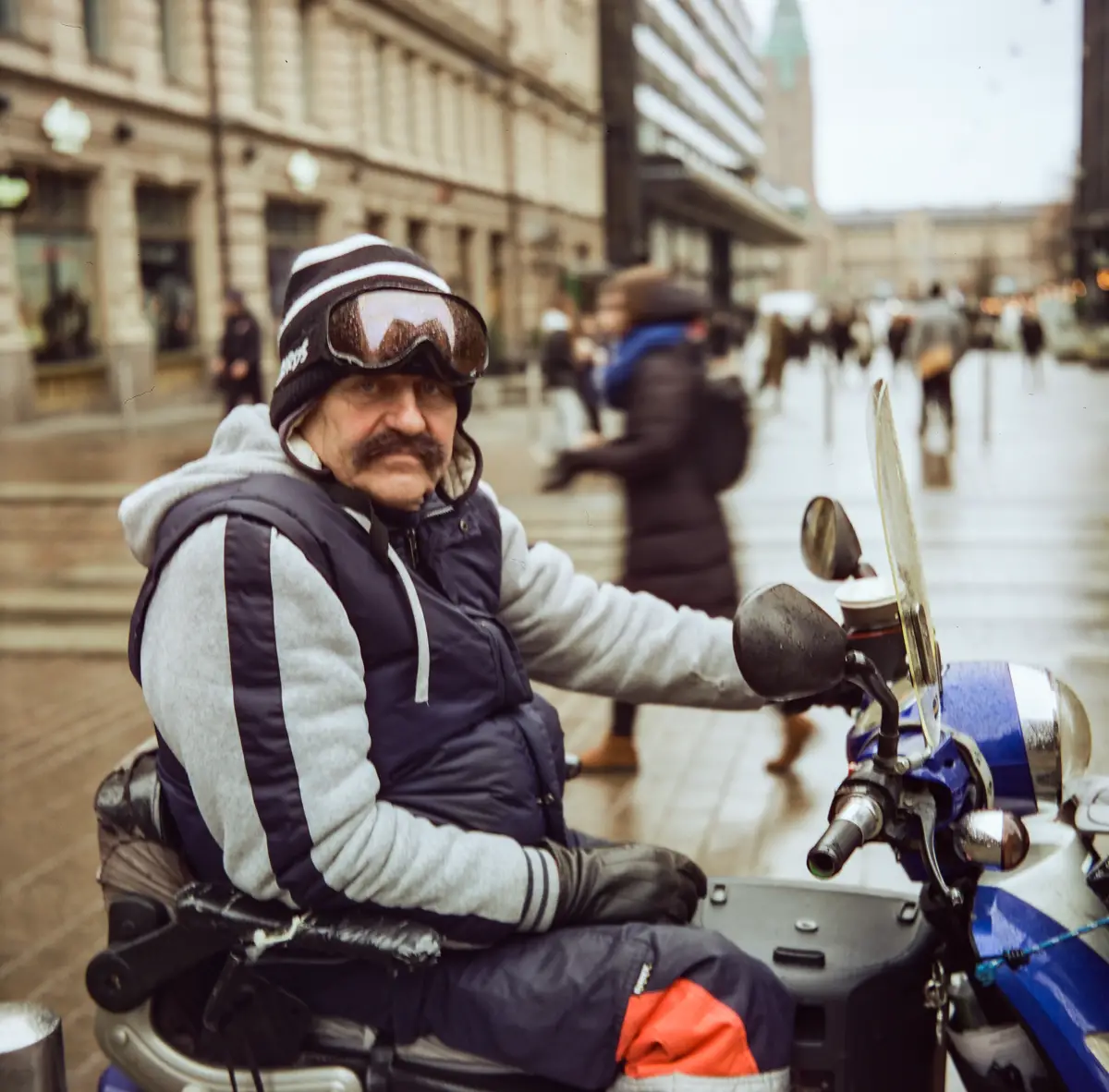
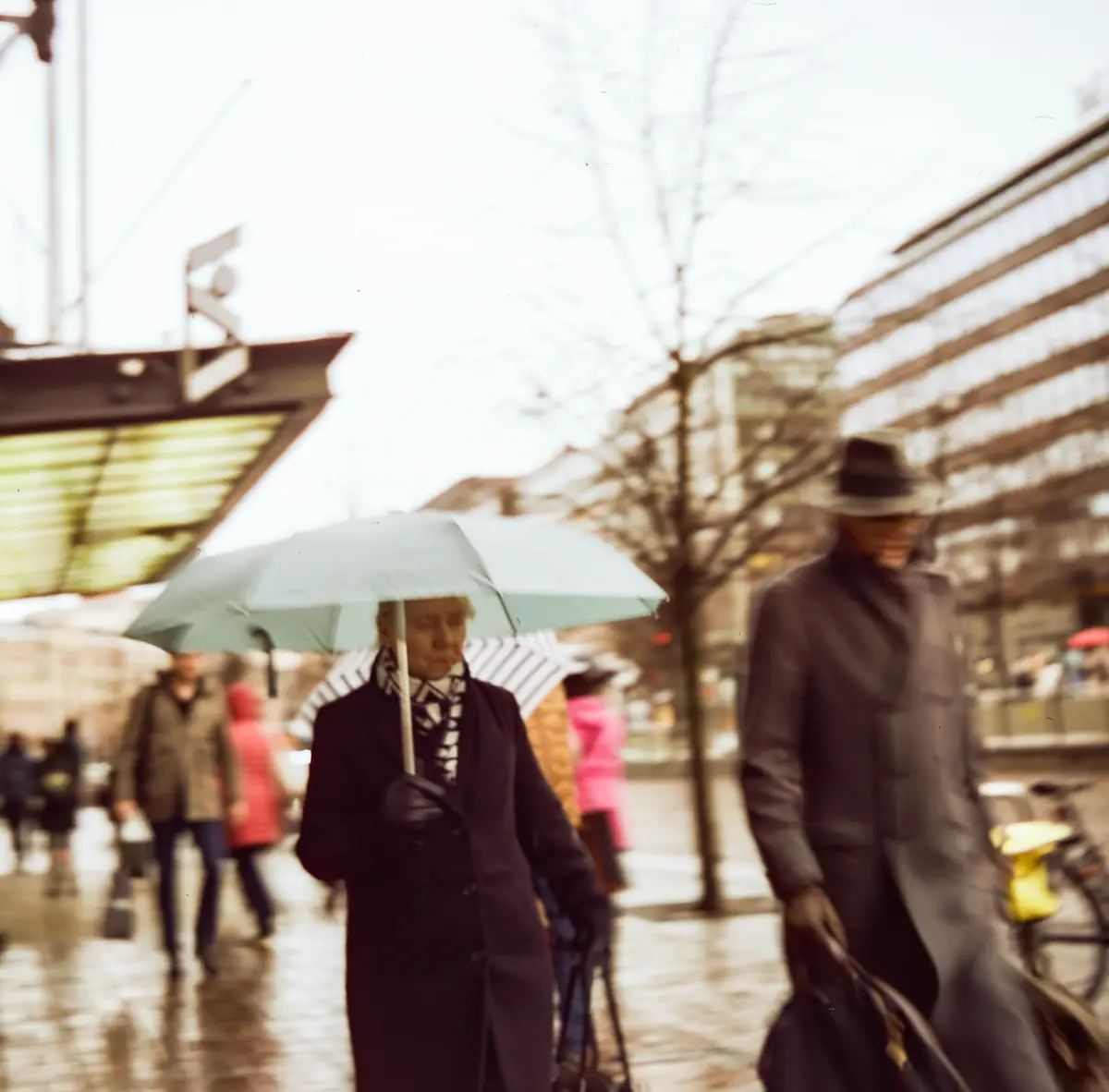
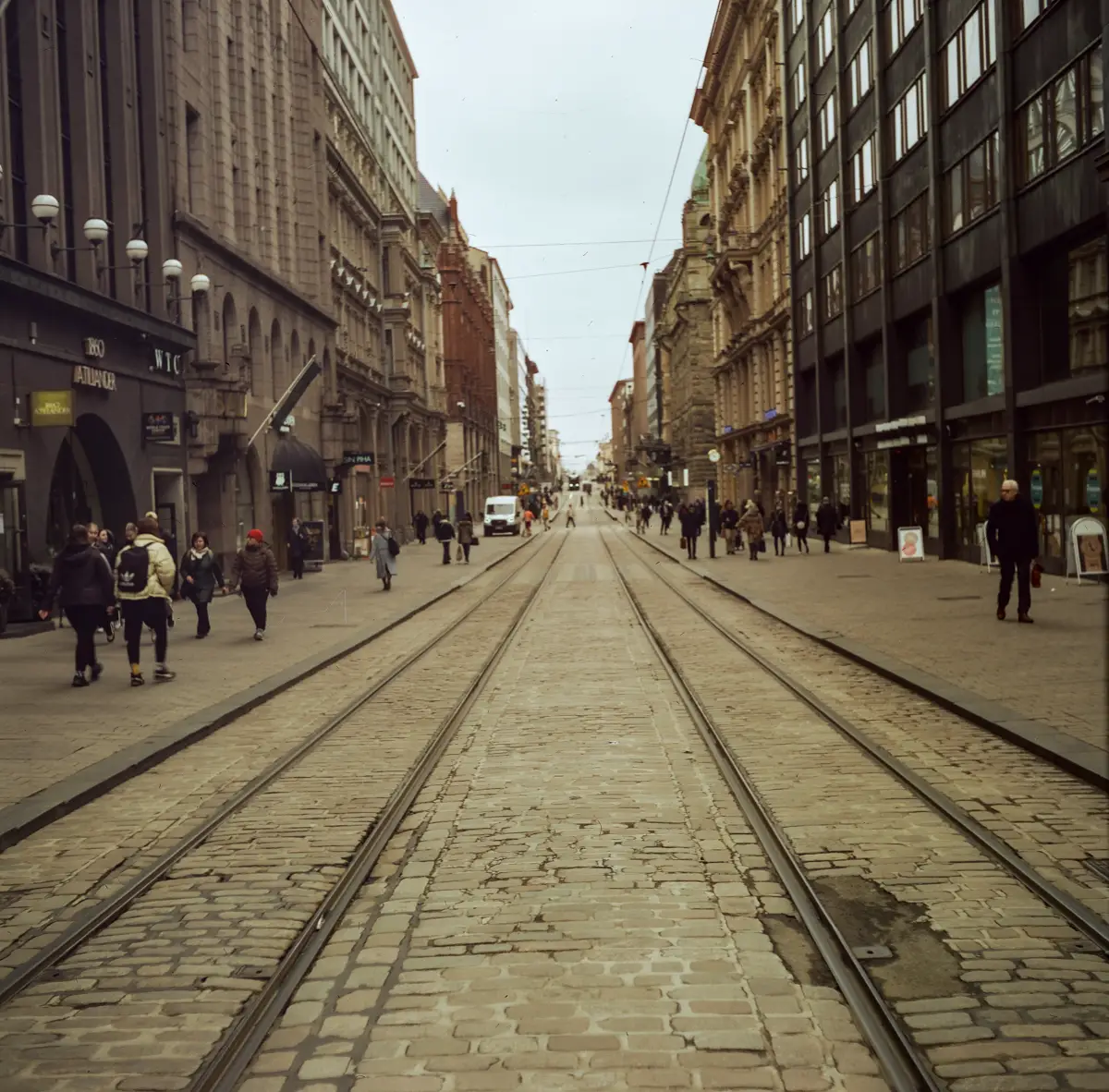
Days 3, 4 and 5:
I’m no Ansel Adams, but I am getting the hang of this. At this point I’ve taken the ferry across the Baltic Sea to Tallinn and have immediately fallen in love with the city. The town is centered around the old medieval city, and scattered with aging Soviet monuments. The weather is deteriorating and a light snow is falling. I’m walking the cobble stones of a city built in the middle ages and could not be happier. Every once and awhile I pull in to a café for an espresso and a change of film. I am convinced this is what photographer heaven is like. And I’m developing a process. Open the camera, set the shutter speed and aperture, cock the shutter, frame the shot, take the shot, open the red window (in the shade), advance to the next frame, close the camera and keep walking. I’m running low on color film and throw in some HP black and white (ISO 100) There is a couple of inches of snow on the ground and shots of the old Soviet structures are really contrasty. On the ferry ride back to Helsinki, the weather has warmed and I’m feeling ridiculously over confident.
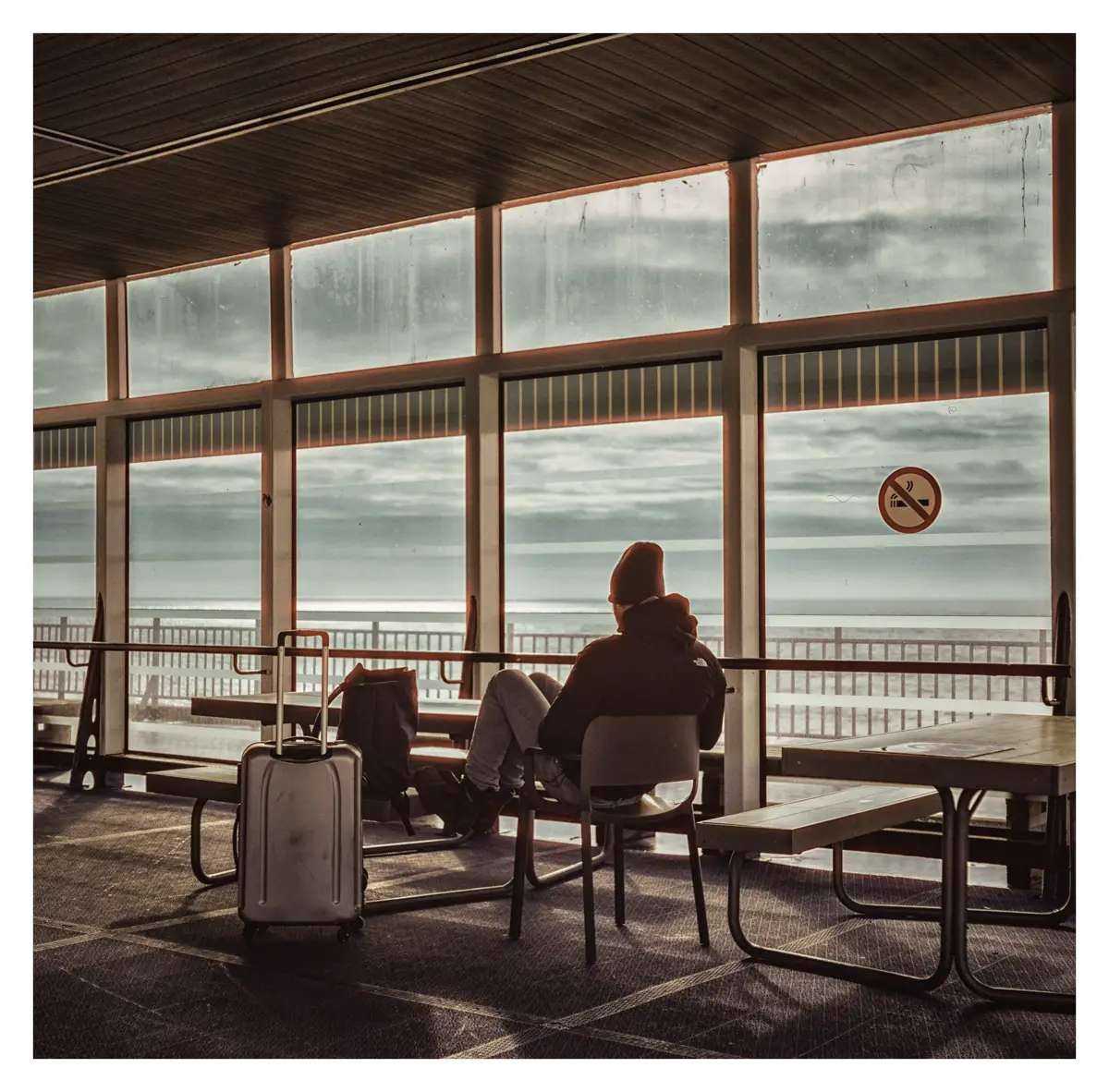
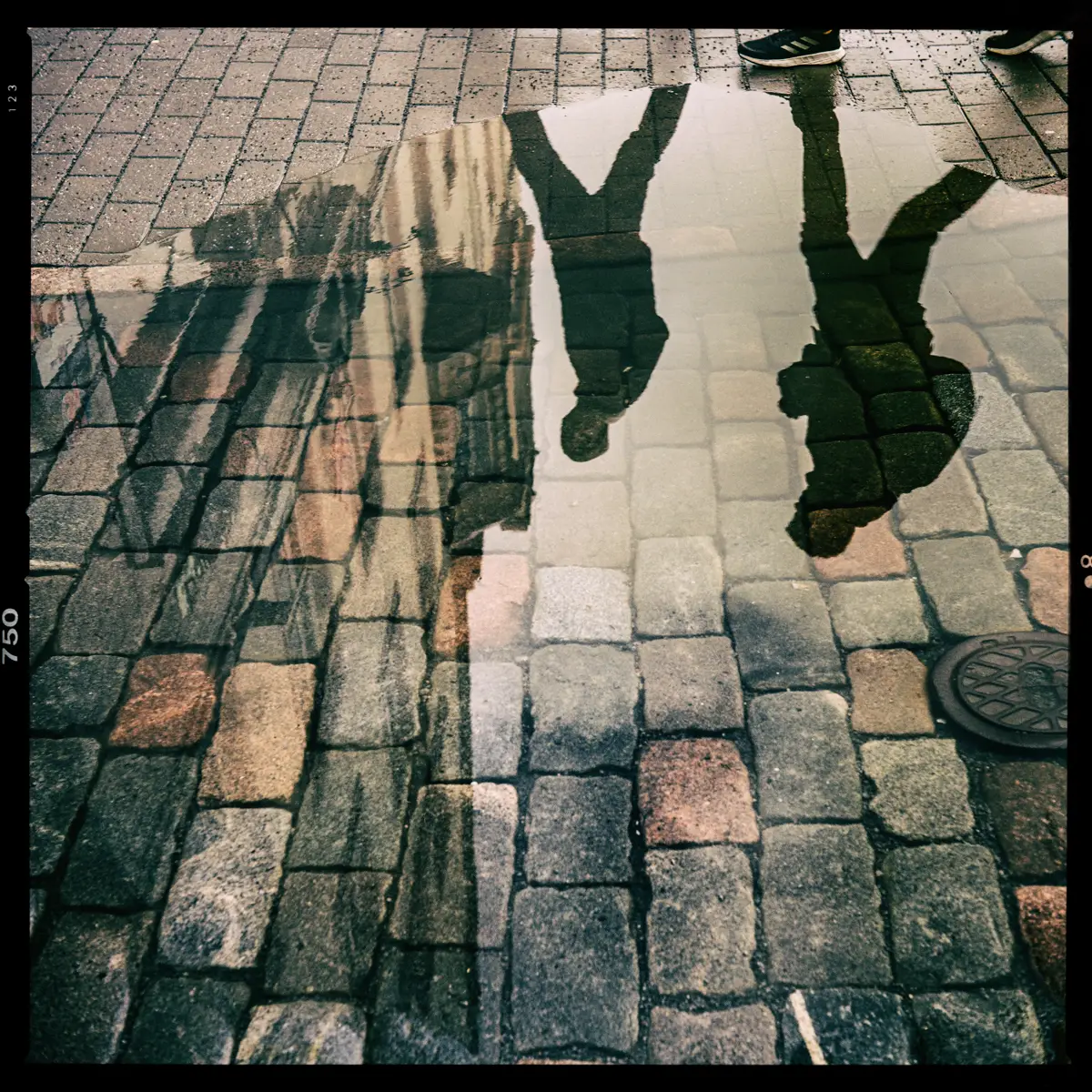

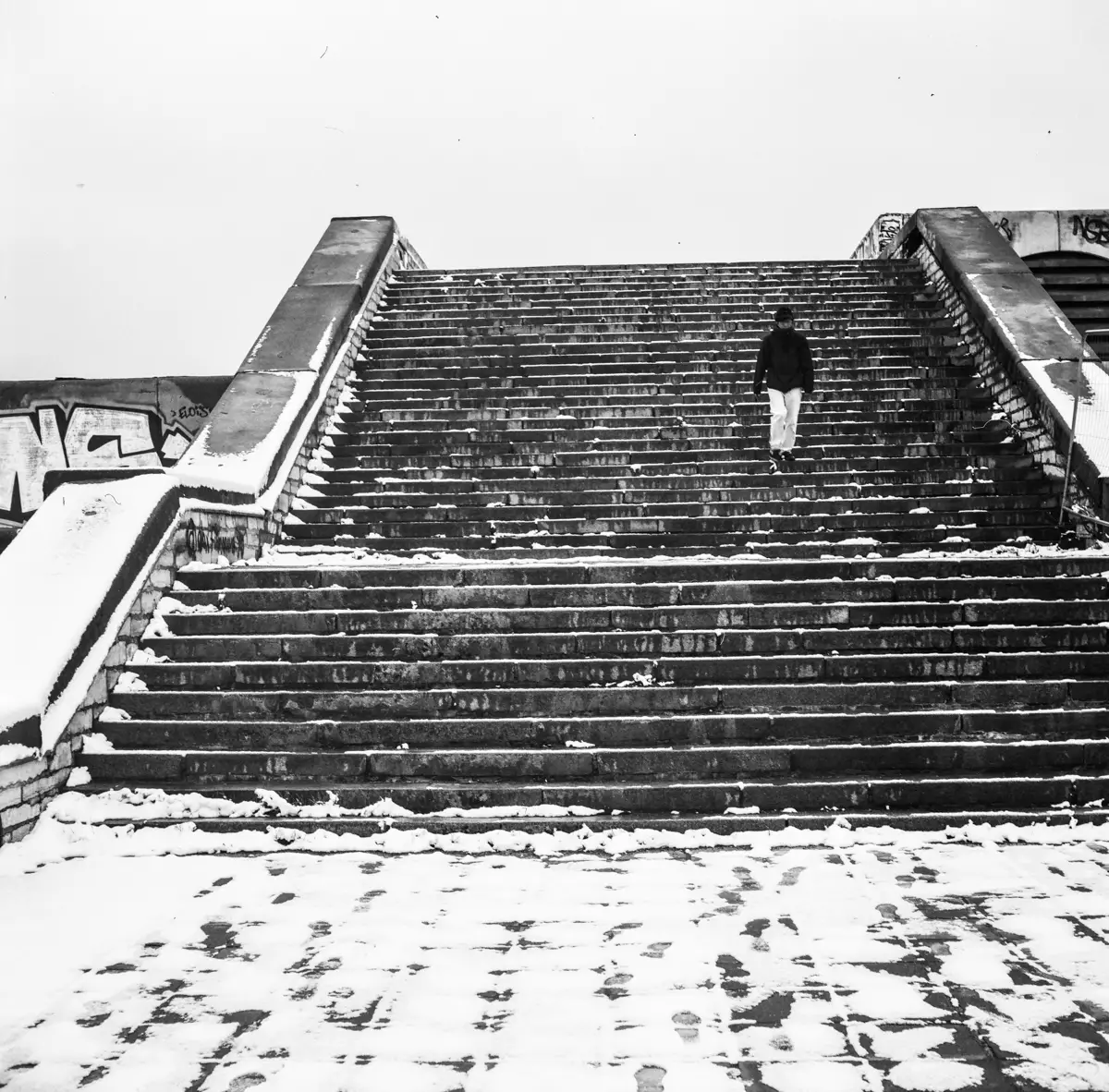
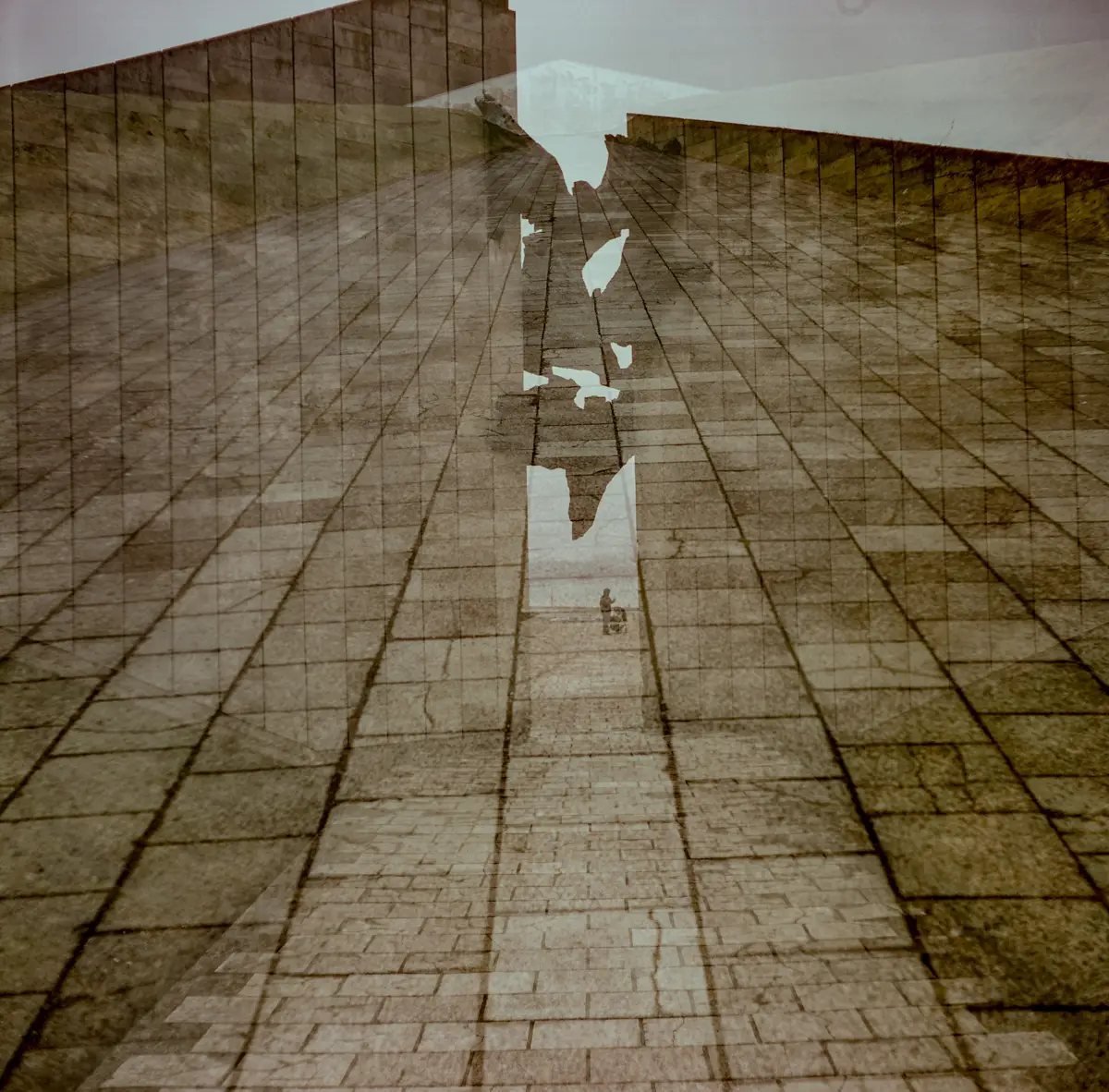
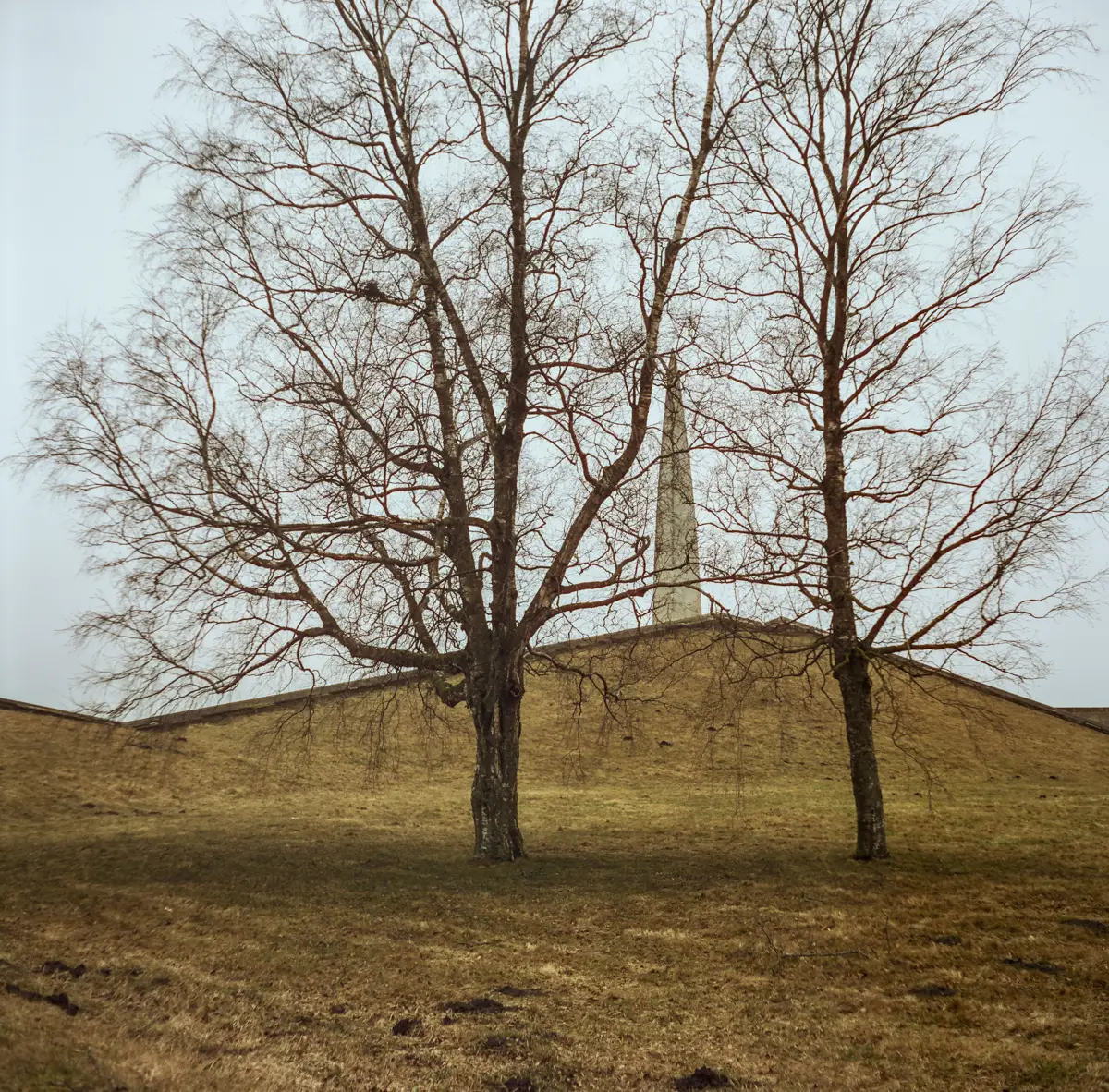

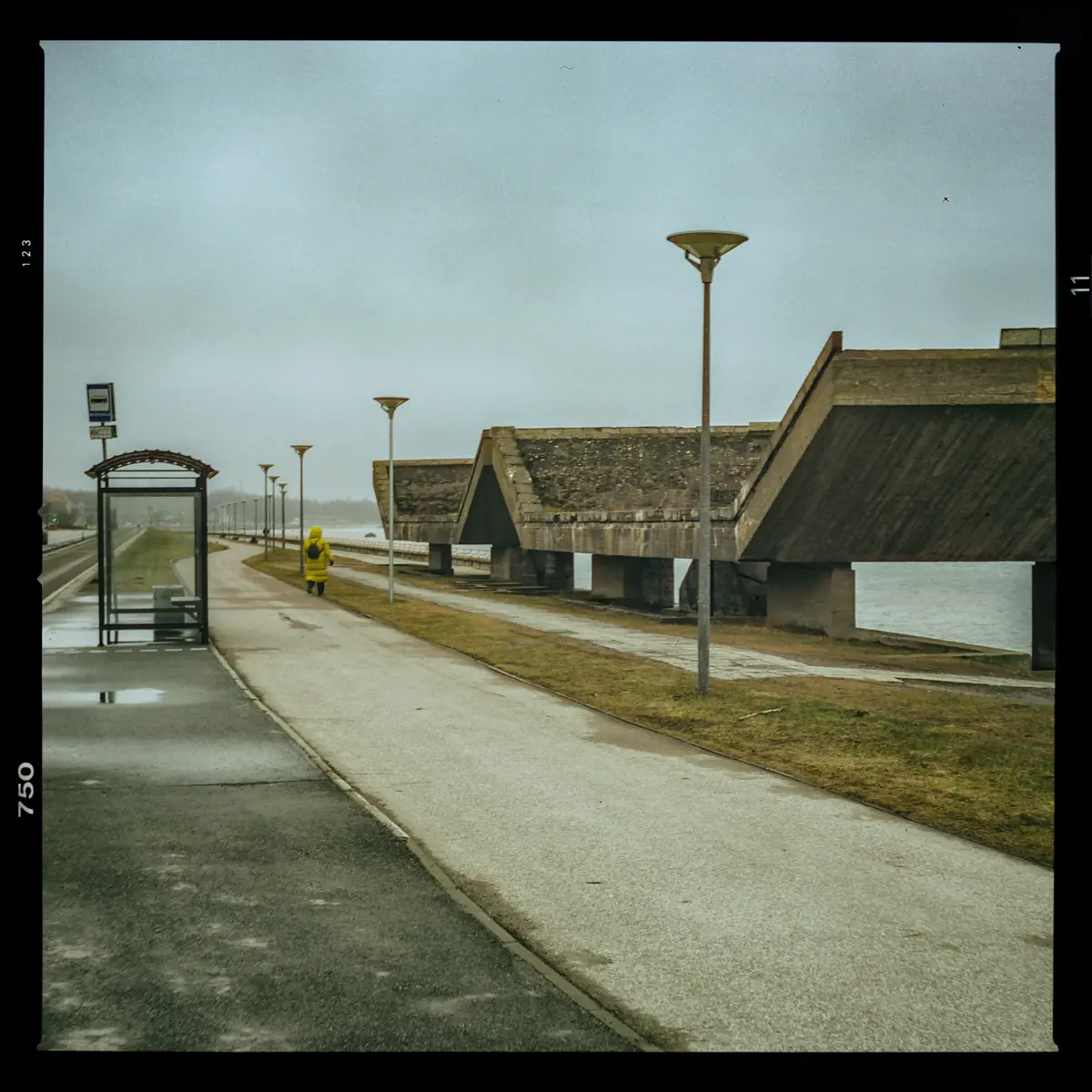
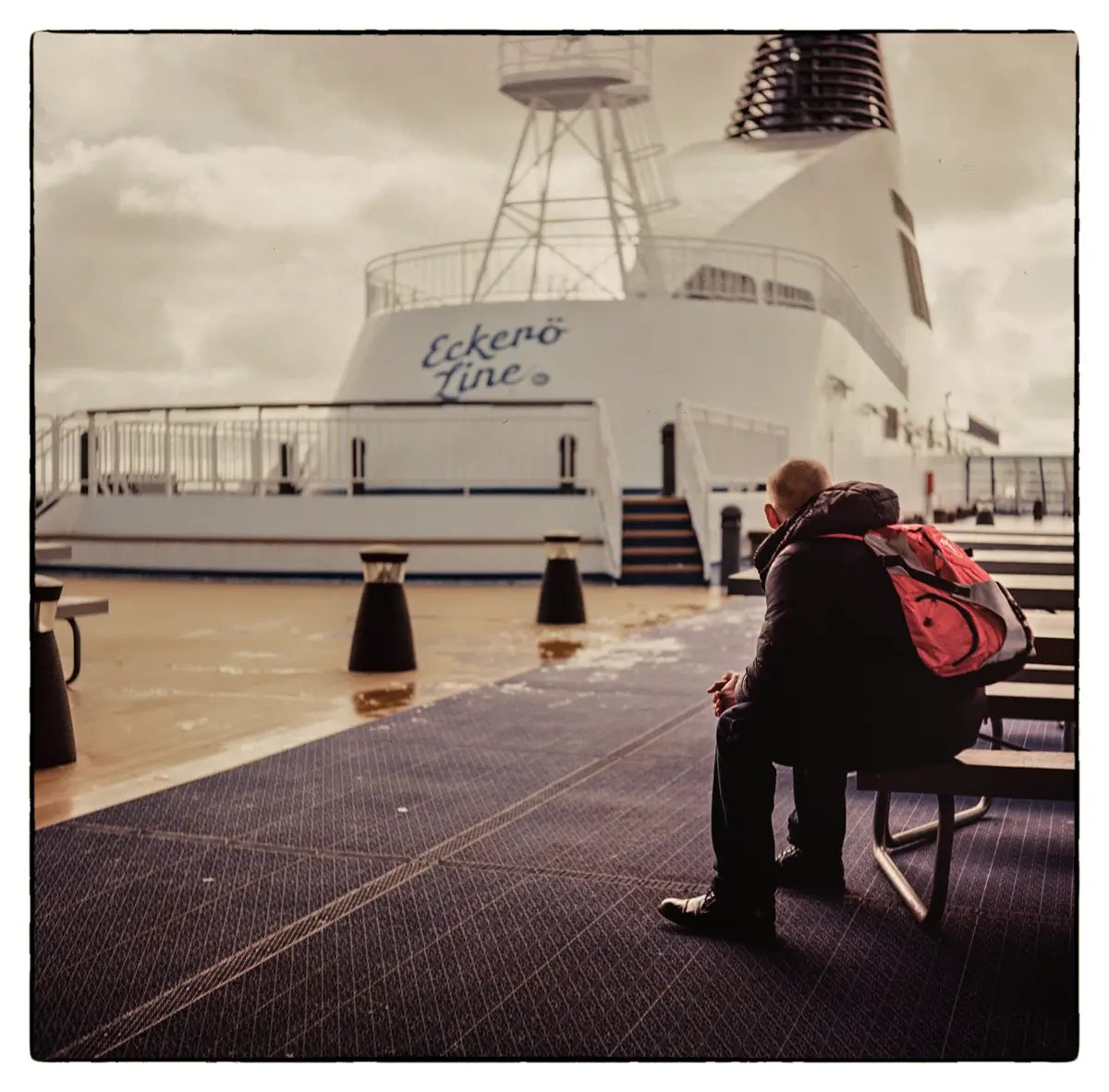
Final days in Helsinki:
I hate the final day or two of vacation, thinking about packing and flight times and things I should have planned better. I’m down to my last roll of 120 film, and I get my favorite shot of the trip, although I wouldn’t know it till I got home. As a young college film student, breaking down the sequence of shots showing the massacre on the Odessa Steps (Battleship Potemkin / 1925) was required viewing. Here in Helsinki, a couple of hundred kilometers from the Russian border, I’m picking up the same vibe.
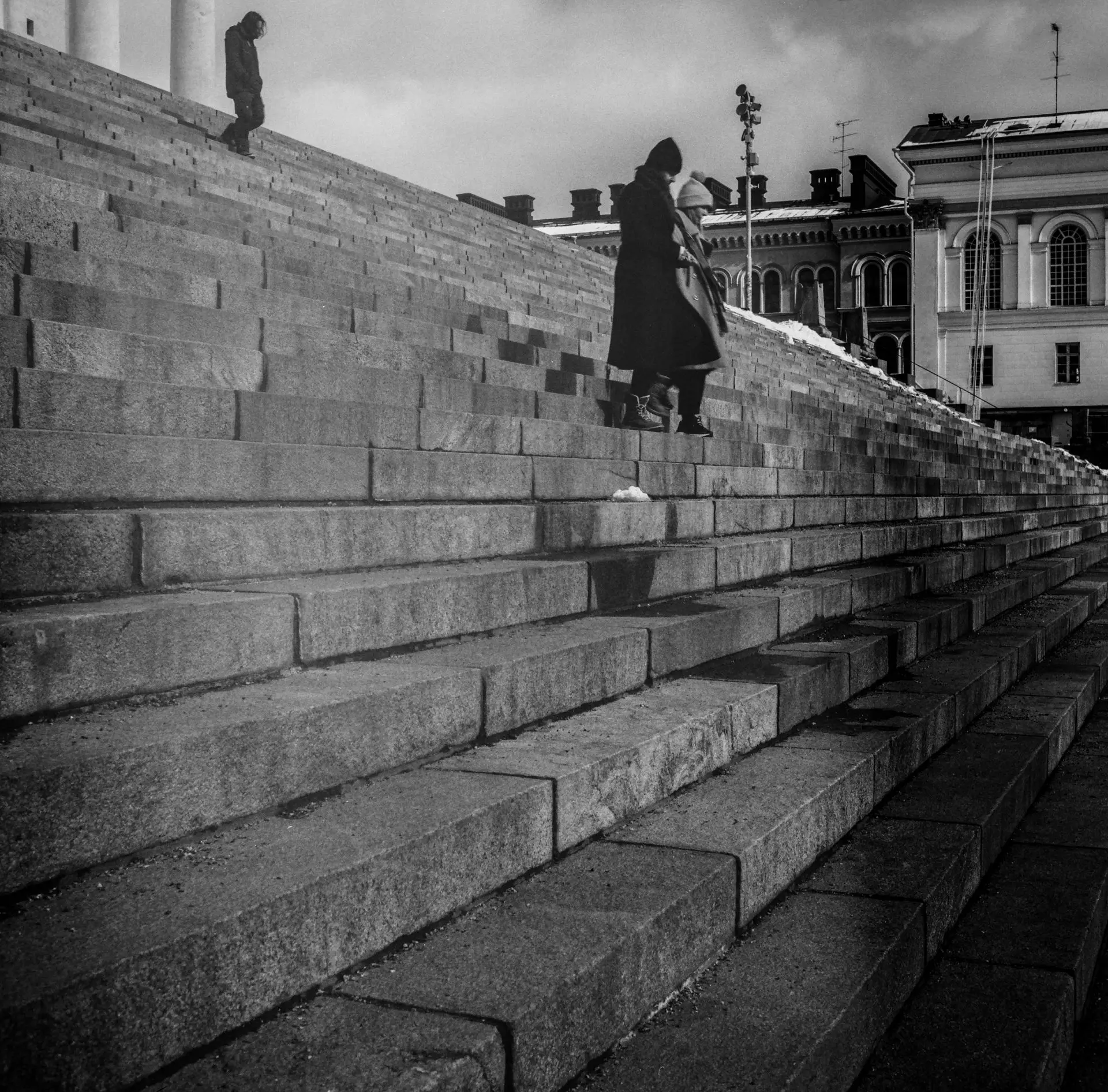
As for the Chrome Six? Let’s just say I’ve not mastered it yet. It’s older than I am, and had to put up with some inexpert use. But the bigger issues were generally on my end. I shot 7 roles of 120 film, and that’s theoretically over 80 frames. I, um, didn’t get that many. On the positive side, once I got the hang of using the camera, I got a couple shots I really like. As a medium format travel shooter, folding cameras are a fantastic option. This Olympus is well built, with a great lens, but is limited in shutter speeds and doesn’t have even an uncoupled rangefinder (Note, there is a more recent Olympus model with a rangefinder).
It’s a keeper for me, but there are a ton of other options out there for relatively low prices. Higher end models will come with a rangefinder, but only some of those are coupled to a focusing mechanism. An uncoupled rangefinder still requires you to hand set the focus based on the rangefinder’s distance measurement. More expensive models may also feature a mechanical film advance and frame counter, eliminating the need for peeking through the red window. Older film formulas, especially the B&W films that dominated photography when these cameras were designed, were not as sensitive to red light but it can be an issue with modern film stocks. (For a deep discussion about how B&W film reacts to light, there is a great resource here.) Keep in mind that these film advance mechanisms are often one of the first things to fail if the camera hasn’t been well cared for. You can see lots of examples of homemade windows cut into the backs of cameras to salvage their use. One feature of newer, higher end cameras are the faster shutter speeds, and although 1/500 is probably about as fast as you will find, I don’t see a downside to the faster shutters.
Just a mention of the Nikon FE2. It’s a system I’m very familiar with and compared to the folding Chrome Six it is modern and predictable, Still, when I see the results, they seem…predictable. I’m satisfied, but not as excited as finally getting a decent shot from the Chrome Six. Part of the adventure was the challenge of trying something new and adding a bit of risk. The Nikon seems very low risk at this point, and I’ll have to take that into consideration on the next trip. But to be fair to the camera I’ve loved for years, here are a few of the 35mm results.
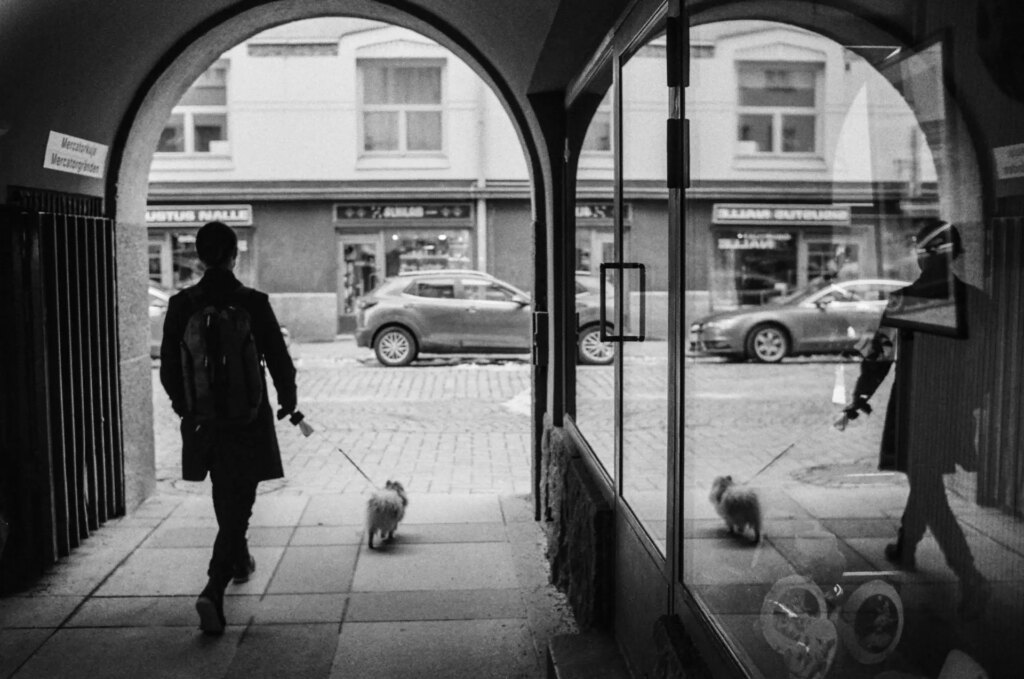
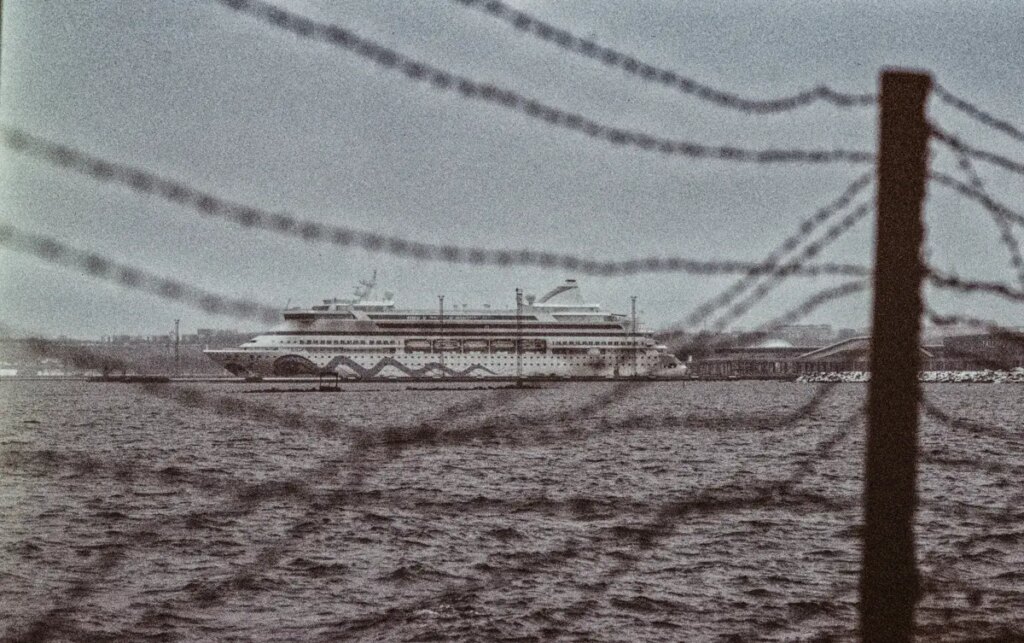
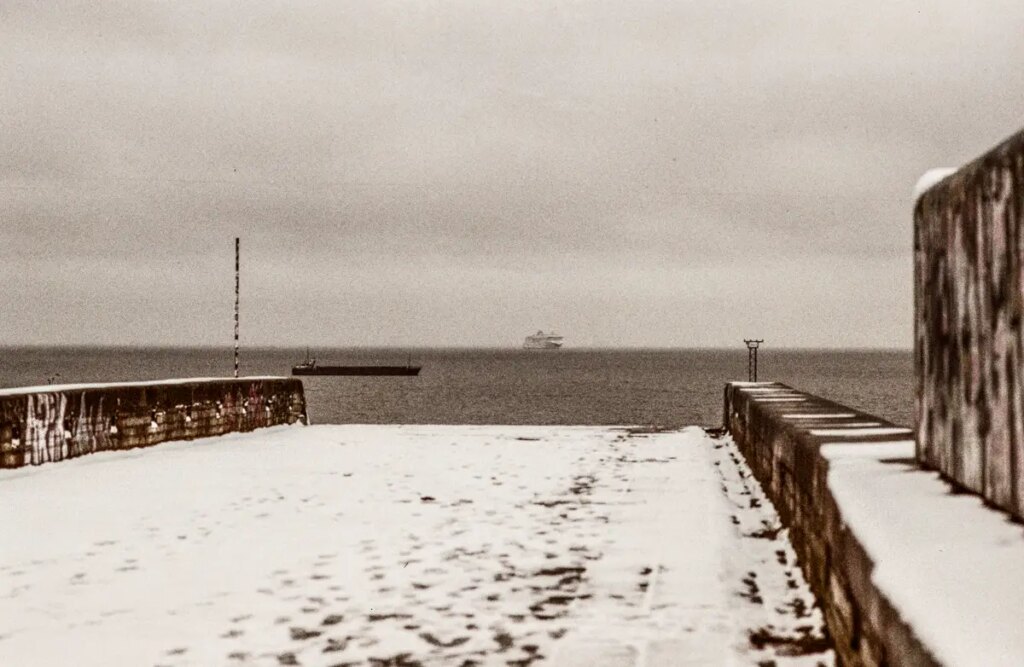
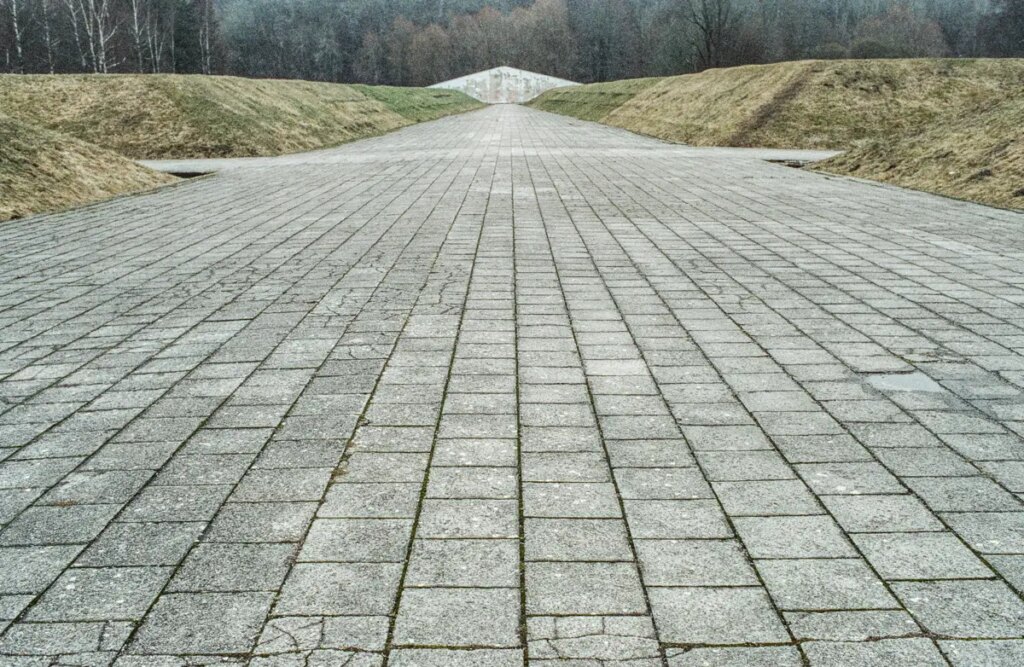
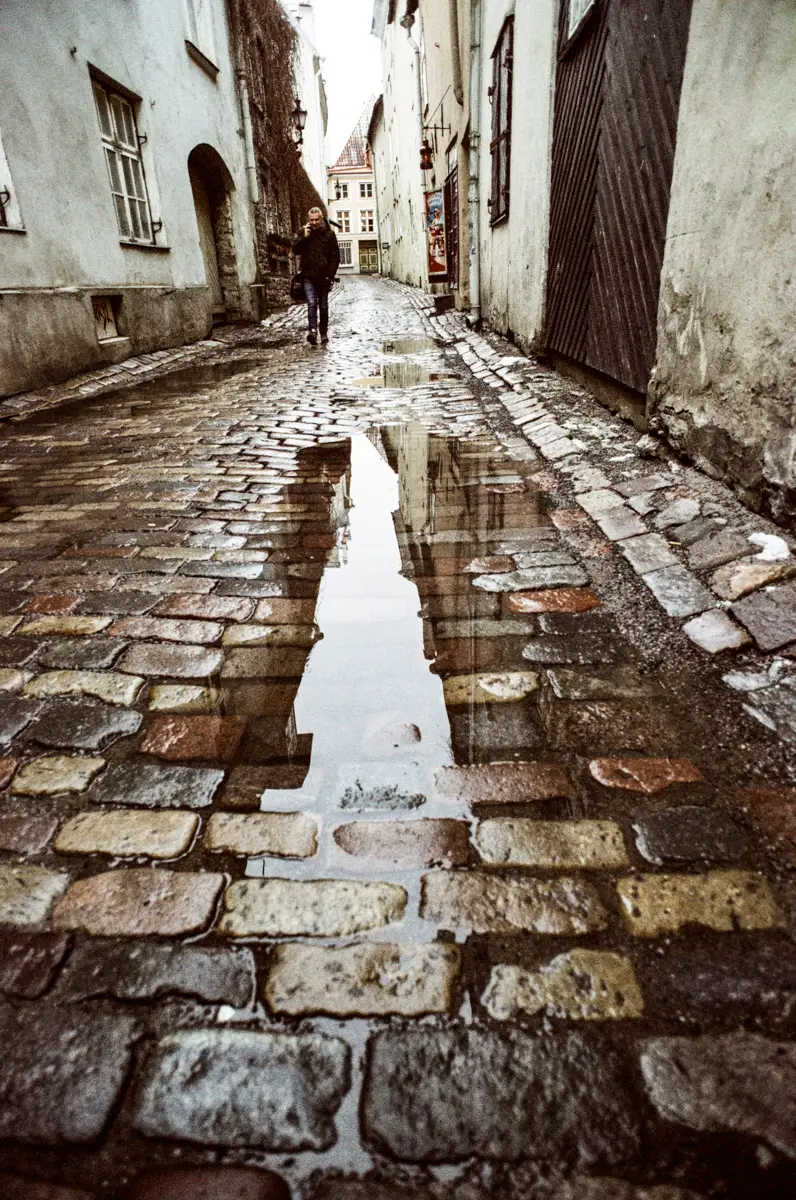
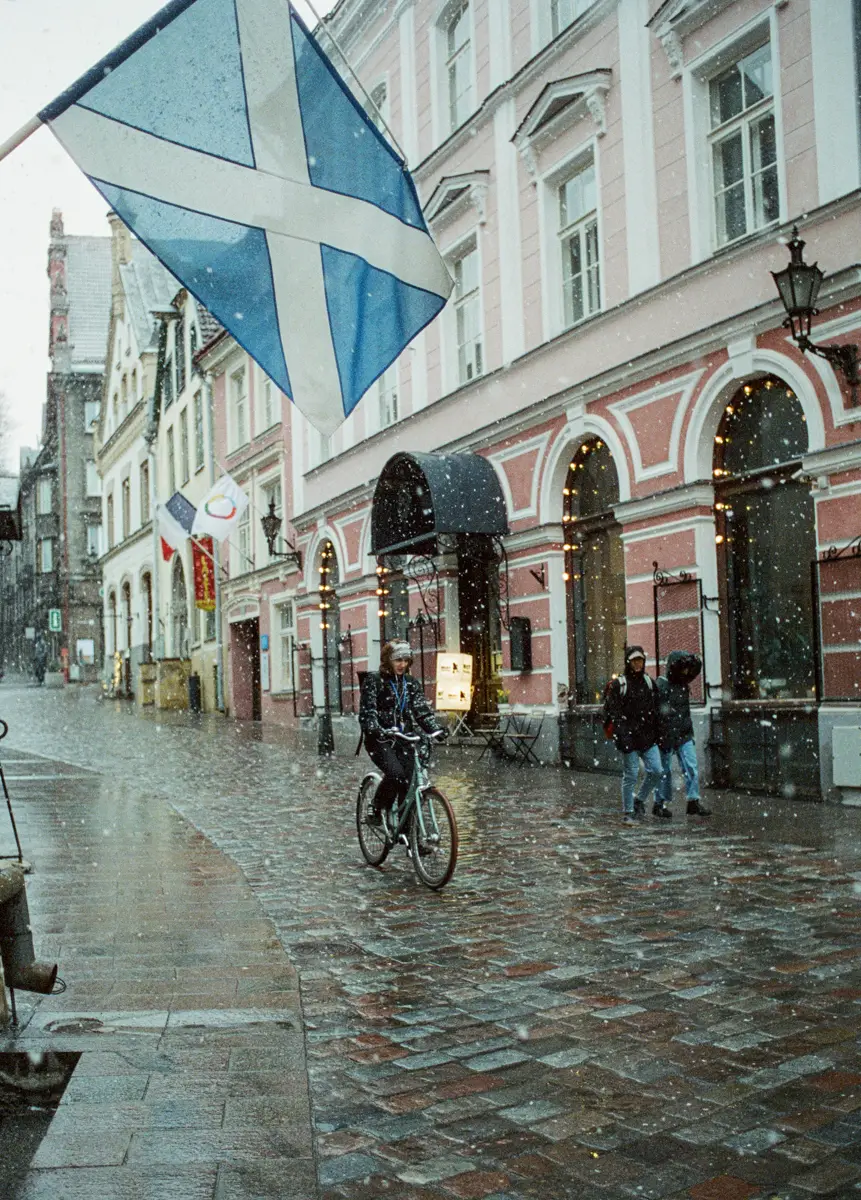
The paid photography I do is all digital these days, and I have no issues embracing the latest technology. Yes, I shoot mirrorless. But at least once a year, I try and find some time to go out on my own and get back to the analogue roots of my love for photography. And every time I do this, it feels as though I have to relearn something that used to be second nature. I’m convinced that every struggle helps you grow as a photographer, and that shooting today’s digital cameras has just made me lazy. Although I own several dozen film cameras, this was the first folding camera I have ever owned or used. I had some issues between the ears, which made any success that much sweeter. I hope you enjoyed the story and the pictures. You can see my lazy work here.
Share this post:
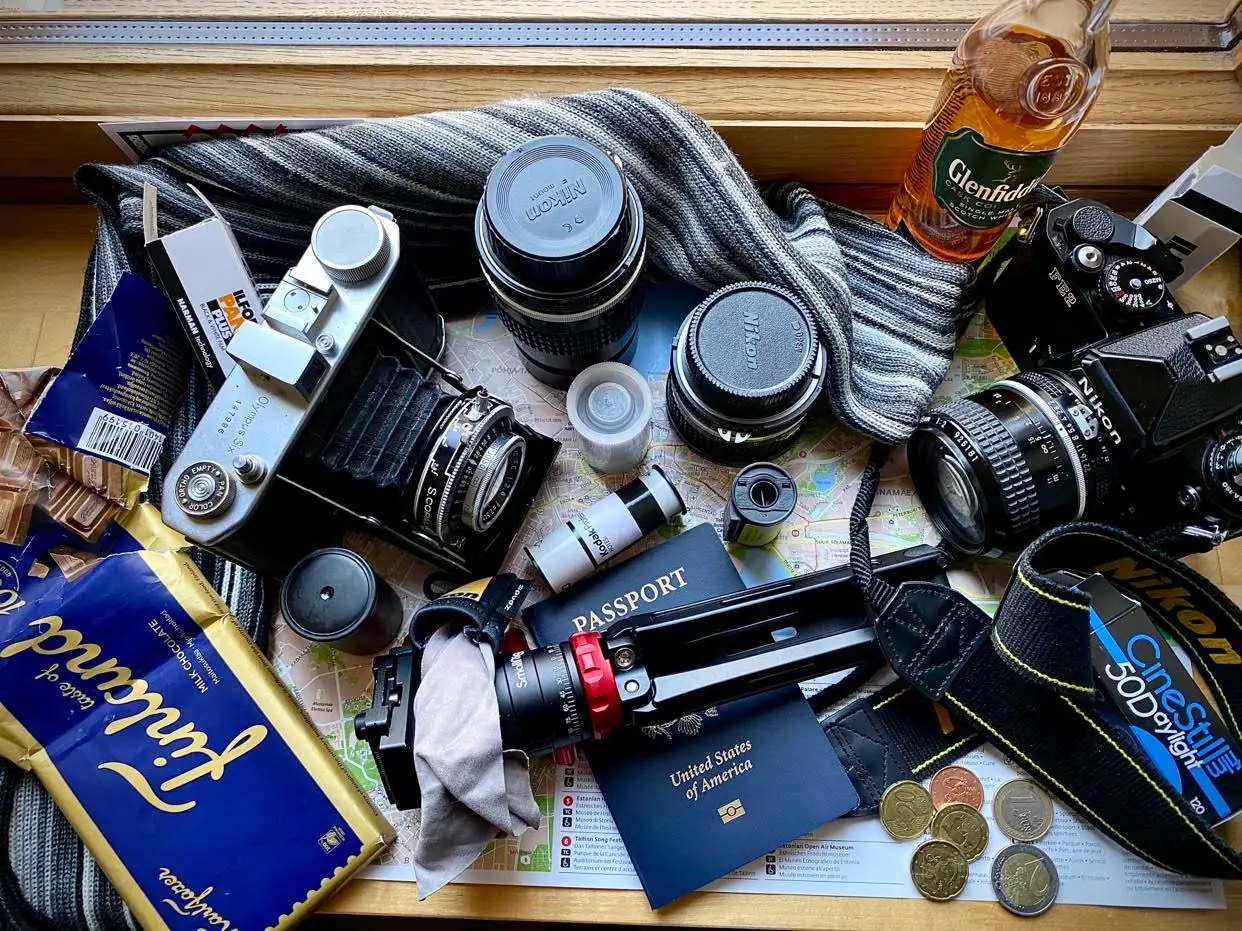








Comments
John Fontana on Olympus Chrome Six – An Idiot’s Guide / A Trip to Helsinki
Comment posted: 30/06/2023
You are obviously very much enjoying your own photography and at the same time earning from your commercial work
Comment posted: 30/06/2023
Karen McBride on Olympus Chrome Six – An Idiot’s Guide / A Trip to Helsinki
Comment posted: 30/06/2023
Comment posted: 30/06/2023
Ken on Olympus Chrome Six – An Idiot’s Guide / A Trip to Helsinki
Comment posted: 30/06/2023
Mike Brooks on Olympus Chrome Six – An Idiot’s Guide / A Trip to Helsinki
Comment posted: 30/06/2023
Gil Aegerter on Olympus Chrome Six – An Idiot’s Guide / A Trip to Helsinki
Comment posted: 30/06/2023
Comment posted: 30/06/2023
James on Olympus Chrome Six – An Idiot’s Guide / A Trip to Helsinki
Comment posted: 01/07/2023
Nice to see a Chrome Six being used, I'm still getting to know mine, I've only put a couple of rolls of Fomapan through it so far. Being so used to 35mm SLRs my biggest issue is remembering to set both the aperture and focus with not having any reminder in the viewfinder.
Comment posted: 01/07/2023
David Hill on Olympus Chrome Six – An Idiot’s Guide / A Trip to Helsinki
Comment posted: 01/07/2023
Comment posted: 01/07/2023
Will Brown on Olympus Chrome Six – An Idiot’s Guide / A Trip to Helsinki
Comment posted: 02/07/2023
But seriously, I enjoyed the article and I’ve been wanting to add 6x4.5 format back into my arsenal for some time. I had it at one time in a Mamiya 645, but the native orientation of that camera is landscape (horizontal) format, and holding that big-ish camera sideways to get portraits was never very comfortable. Folding 6x4.5 cameras have a native orientation in portrait (vertical) format, something that’s important to me since I do mostly portraits. The Mamiya 645 wouldn’t fold up and fit in my coat pocket either, so there’s another plus I found attractive.
So anyway, thanks for the inspiration to add an Olympus folder to my collection.
Mike on Olympus Chrome Six – An Idiot’s Guide / A Trip to Helsinki
Comment posted: 03/07/2023
Comment posted: 03/07/2023
Comment posted: 03/07/2023
Comment posted: 03/07/2023
Mike Brooks on Olympus Chrome Six – An Idiot’s Guide / A Trip to Helsinki
Comment posted: 07/07/2023
John Matthews on Olympus Chrome Six – An Idiot’s Guide / A Trip to Helsinki
Comment posted: 04/01/2024
Comment posted: 04/01/2024